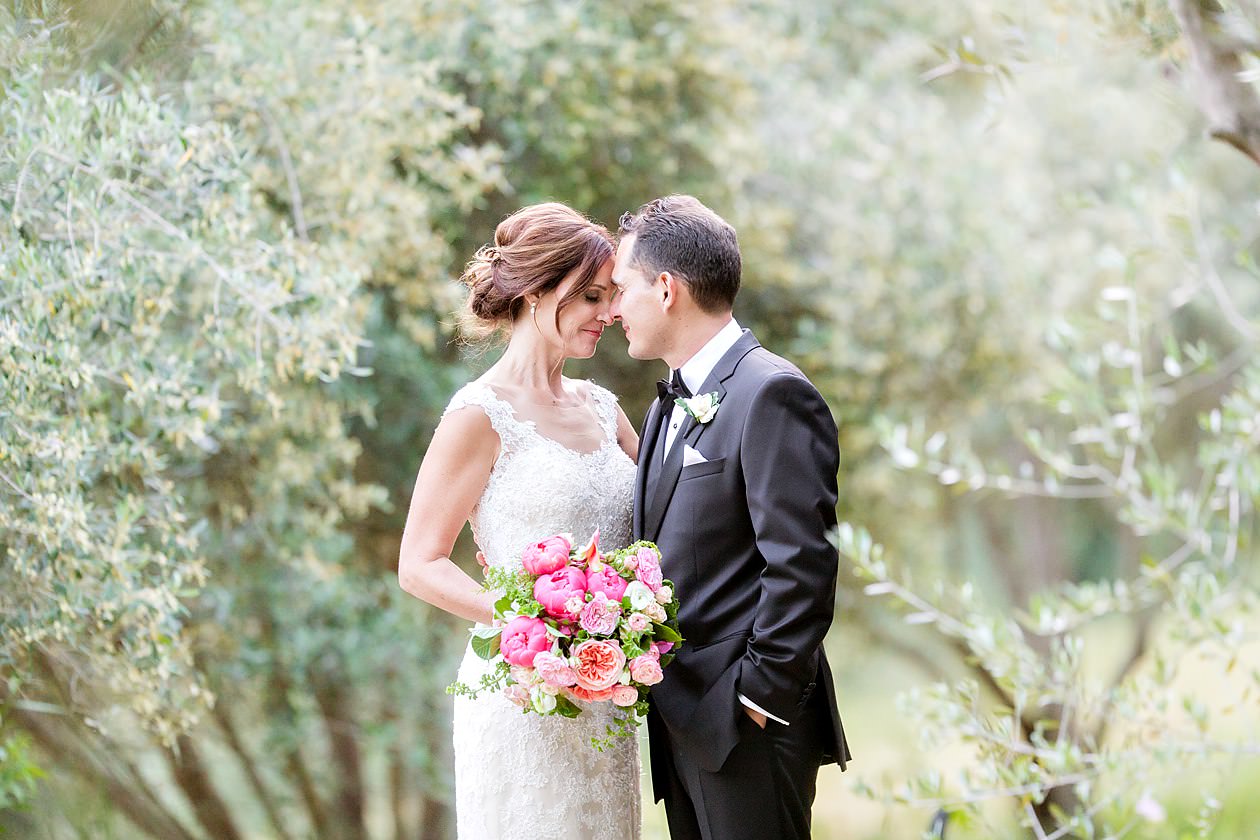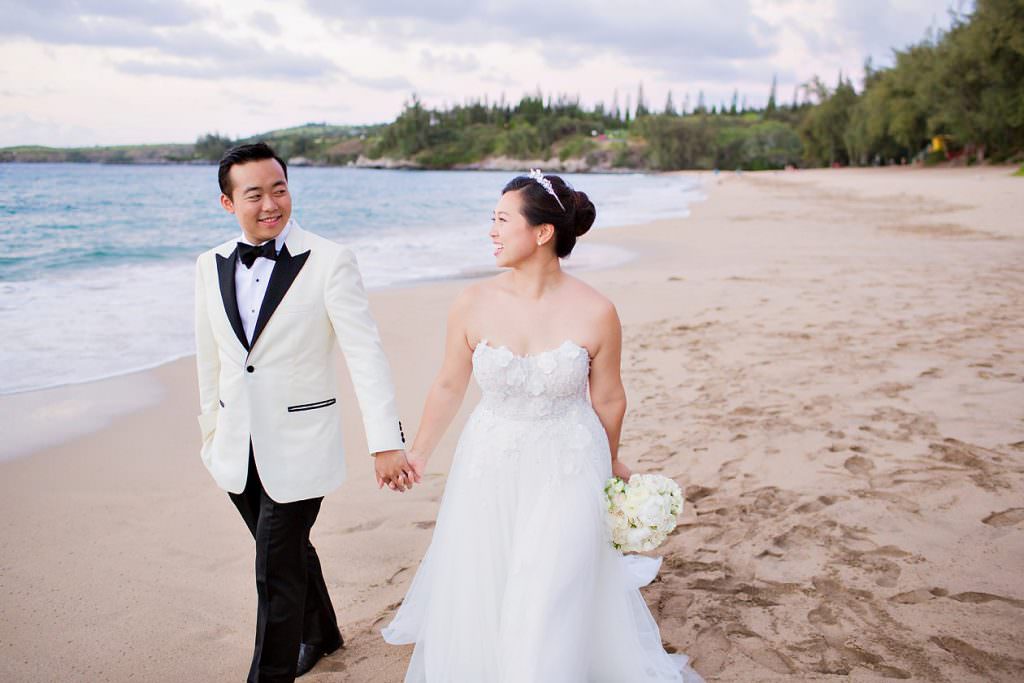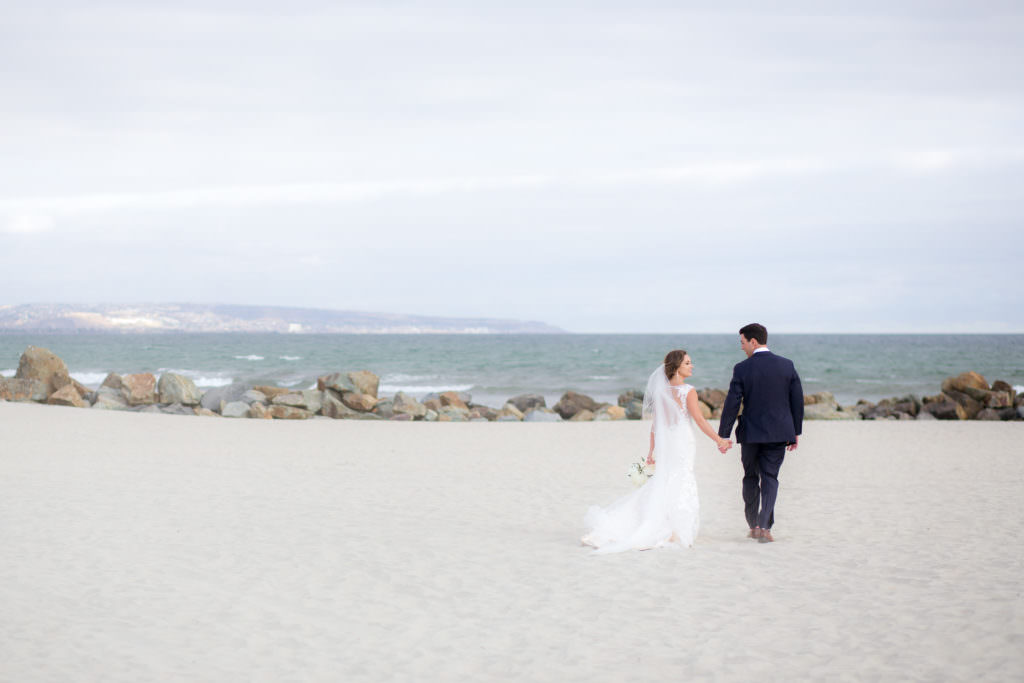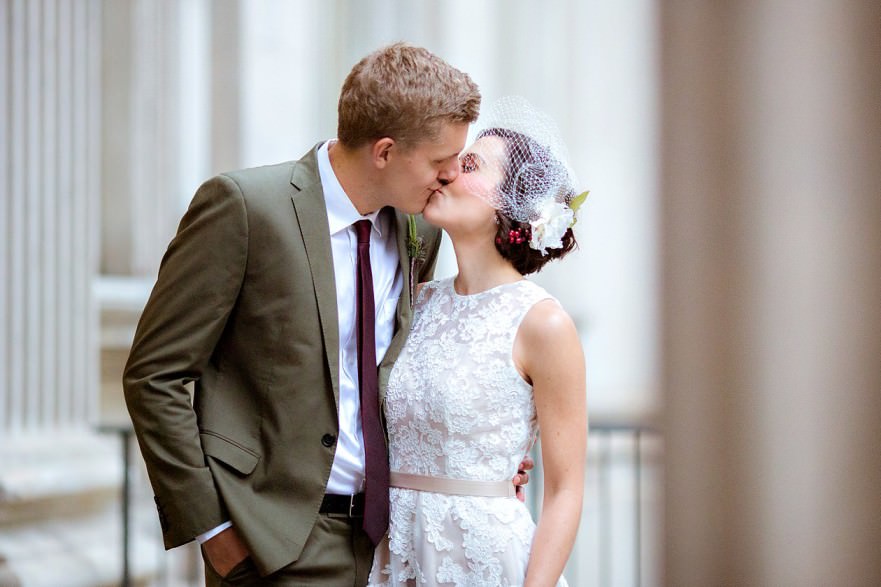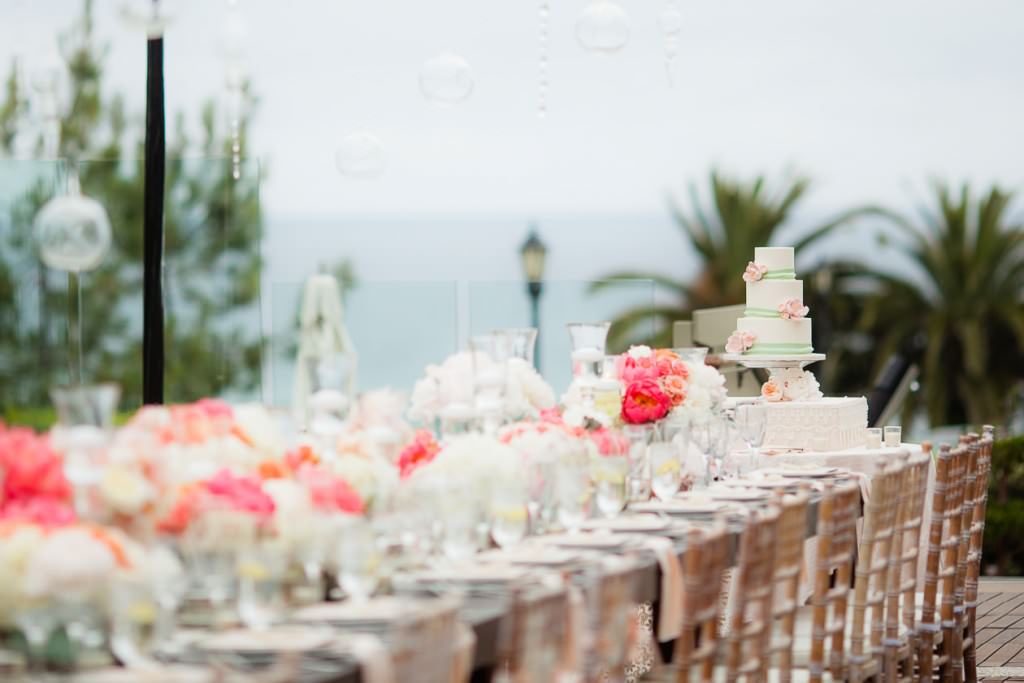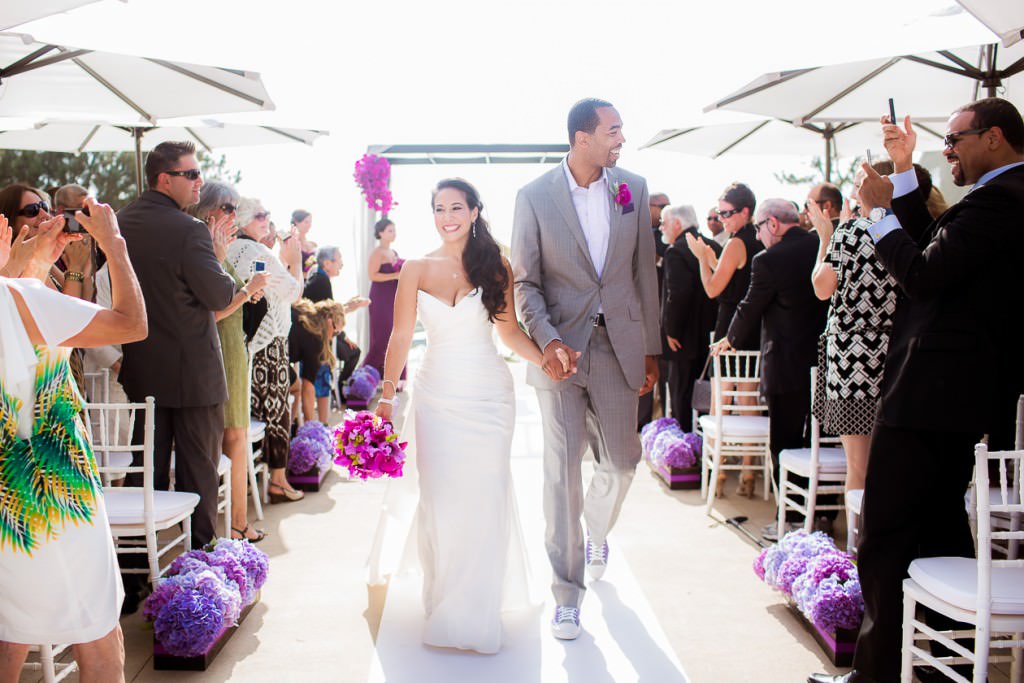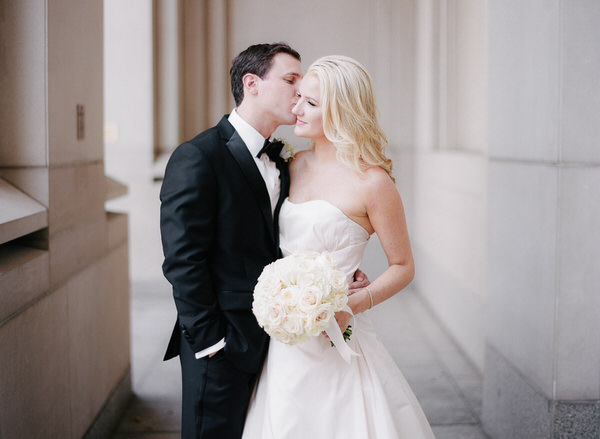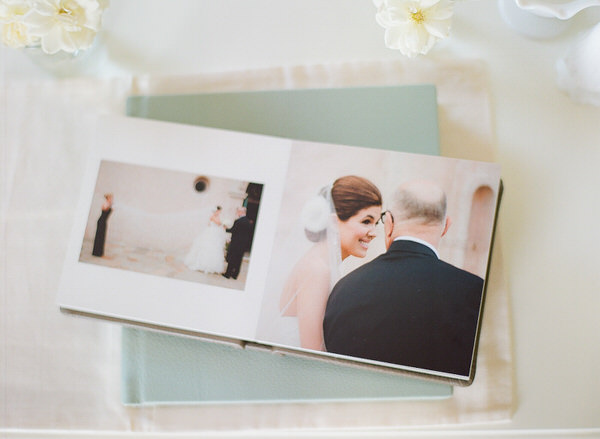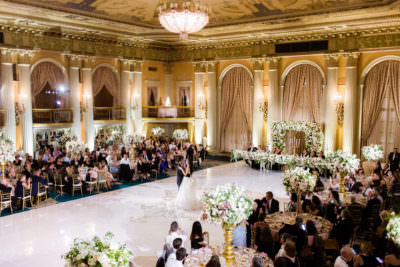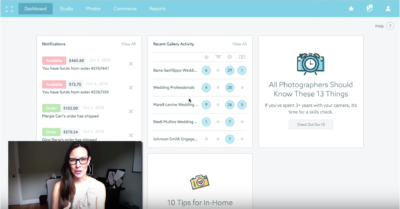Listen on Apple Podcasts | Listen on Spotify
Creative Rising Episode 107
[TRAINING EPISODE]
Responding to inquiries is frustrating.
Especially when most of your leads don’t ever write back.
How can you get people to respond? How should you follow up? How often should you follow up?
I mean, you don’t want to be that “annoying vendor” right?
Our studio handles hundreds of inquiries every year, so we’re sharing all of the lessons we’ve learned about the best ways to respond to a lead.
If you’ve ever felt like you’re bugging your clients, we talk about how you should follow-up, how often you should follow up, and the four key things we do that have brought stale inquiries back to life.
**Listen to the Training Above or Read the Transcript Below**
EPISODE SPONSOR: Get 50% off your Getting Started Kit with KISS Wedding Books
SPECIAL THANKS TO SARAH BRADSHAW!
Quick Guide:
- (5:00) Key #1: We Continually Follow Up
- (20:40) Key #2: We Follow Up In Multiple Ways
- (32:40) Key #3: We Track Our Leads
- (39:16) Should I Hire an Associate?
- (44:11) Key #4: We’re Different Than Everyone Else
Full Transcript:
Erin: (00:00)
So Jeff, what’s been coming up for you lately with talking to other photographers and your coaching students?
Jeff: (00:05)
You know, a big conversation that is coming up constantly is inquiries. People are getting all kinds of inquiries and they’re wondering what to do with them, how to book them, how to figure out how to get people to respond. It’s kind of the question of the hour. I don’t know what it is about this time of year, but people are asking about it all the time and I think that there’s a few key things that I see most photographers, things that they’re not doing that’ll have a huge impact on their bookings and their bottom line.
Erin: (00:33)
Should we break those things down for people?
Jeff: (00:35)
If we can do it with a musical montage, then yeah, I’d love to share.
Erin: (00:49)
Welcome to Creative Rising, my friend. I show about what it’s really like to run a photography business. I’m Erin Youngren and today I want to talk about inquiries. Part of running your own creative business is that making money, getting clients, booking jobs, all of that is on your shoulders as the business owner. So the inquiry process of running a wedding photography business can be extremely stressful. What should you do when a bride contacts you to shoot their wedding? Should you email them? Call Them? Should you leave a message? What if they don’t respond? Should you follow up? How long should you wait before you follow up? How many times should you follow up? I mean, brides have a lot going on. They’re planning their wedding so you don’t want to annoy them, right? There’s so many questions about this very critical part of your business.
Erin: (01:36)
The good news is that our studio deals with hundreds of leads every year, so we’ve got a lot to say when it comes to how to handle an inquiry. When it comes in in this training episode, we’re going to do things a little differently. For the majority of the time that Jeff and I have been in business, I have been in charge of all of our wedding inquiries and bookings. So for 12 years I did all the lead stuff, all of the inquiry responses, followups, phone calls, client meetings, proposals, everything. But when I went on maternity leave with our son, James and April, 2018 Jeff stepped in and took over all of the wedding sales. So He’s been doing all of this inquiry follow up for over a year now, and he came into the process with completely fresh eyes and he’s learned a lot. So he’s hopping into this training with me to share some really valuable insight with all of you.
Erin: (02:30)
Has handling all of the inquiries and the bookings and the wedding sales over this last year been harder or easier than you thought it would be?
Jeff: (02:38)
Oh my gosh. So much harder. It is one of those things that man, before I did it, I just didn’t get it. Like I helped you with the systems and I helped you figure things out and I would listen to you on the phone and then I would have all these critiques and all these things that you could do better. Then once I was into it, I was like, “Oh yeah, this is hard. So it’s a lot harder than I thought.”
Erin: (03:04)
Yeah. There would be all these times when you would say, why don’t, why aren’t we doing this with wedding inquiries? Why aren’t we doing this? What, you know, why aren’t more people responding? And I would just sit there and I’d look at you and I’d be like, how about you give it a shot?
Jeff: (03:17)
And now I’ve given it a shot. And the answer is, it’s hard. Inquiries are hard.
Erin: (03:22)
Yeah. There’s no simple answer. As much as I would love to have a simple answer for myself, but also to give to other people, there’s no one thing that’s gonna change at all. No one silver bullet. But there are things that we can do to make things better, to bring down the percentage of inquiries that ghost on you or go stale and never respond. But that’s always going to happen. And so I think just coming to terms with the fact that your experience is normal. If people don’t respond to you, it hurts. And it stinks. Especially when you run a creative business, the rejection is hard. That was always one of the hardest parts of the business for me. In fact, that was the thing that if I wanted to give up on this business, it was usually surrounding some sort of bride rejecting us saying, no, I want someone else. Or people not responding or things that seem like a sure fit. Like somebody who’s for sure gonna book, they end up not booking us. And those were always the hardest points in the business. Hands Down for sure. But thankfully we have a lot that we have learned about inquiries that can help other people.
Erin: (04:26)
So what have you learned about inquiries in this past year as you’ve been handling all the wedding sales?
Jeff: (04:32)
Yeah, what I’ve learned is really when it comes down to, there’s a lot of things that make the whole inquiry process easier and better. But really it boils down to four key things that we do now in our studio and all the things that we’ve been doing for a long time that turns inquiries into bookings. And the surprising thing is that these four things are actually really simple, but in talking to different students and different photographers, I found that most photographers aren’t even doing them, but they definitely should be.
Key #1: We Continually Follow Up
Jeff (Coaching): (05:03)
So I’m watching your follow up process. I don’t think it’s enough. You’re sending one maybe two emails. I’d like you to follow up a lot more. Because I really want you to get down to why these people aren’t booking and pne email is not going to cut it. One phone call is not going to cut it.
Sarah Bradshaw: (05:27)
Okay. Talk to me more about that.
Erin: (05:29)
This is a coaching call between Jeff and his student, Sarah Bradshaw. Sarah is a wedding photographer in Washington, DC. Her business is Sarah Bradshaw photography, and what she’s experiencing in this call is not uncommon. She gets all of these leads, but very few of them respond to her past the initial inquiry and she’s wondering what to do. So Jeff dug into what she currently does when a bride contacts her to shoot their wedding.
Sarah Bradshaw: (05:55)
So I usually give it about 24 hours after an initial email. When I get an inquiry I follow up within usually a few hours if not within the same day, unless it’s a weekend. If I get it on a weekend, an email doesn’t go out till Monday morning and then I follow up on those inquiries the next week via email. It they didn’t respond, I consider them stale.
Jeff: 06:26 They’re not stale yet. The massive amount of leads that we deal with, we follow up for two months, A long time. It’s shocking how many of them convert.
Erin: (06:48)
Okay, so let’s break this down with Sarah’s coaching call. What she does with inquiries is not uncommon and it’s not bad at all. I mean it’s all very common sense. She didn’t say this on the clip, but she does have her studio management software at TAVE send an autoresponder email as soon as somebody inquires, so when they fill out a contact form, they get this really helpful email with all of this pricing information. Then Sarah falls up as soon as she can with a personal email within 24 hours, and then if she doesn’t hear back, she follows up a week later. So that all sounds reasonable, right?
Jeff: (07:24)
Yeah. It’s totally reasonable. She’s doing great job. She should keep doing what she’s doing, but she needs to do more. She needs to follow up more and here’s why.
Jeff (Coaching): (07:32)
Yeah, here’s what happens. You’re going to be like, Jeff, that makes so much sense when I tell you this. They get engaged and they decide it’s time to start planning the wedding. They have the date, the venue. What am I going to do? I’m inquire with photographers. They send out 50 emails. Then they get 50 inquiries back. They’re inundated and all of a sudden they say, oh my gosh, there’s more to this than I thought. I am overwhelmed. I’m paralyzed. I’m going to come back to this. I’m going to work on something else. So you’re giving up on them before they’re ready to look at it again. When you come back to them three weeks later, a month later, I can’t tell you how many times people will say things like, thank you so much for following up.
Erin: (08:25)
So this is the first key thing that we do in our business that turns our inquiries into bookings. We continually follow up past just one email. So talk to me a little bit about that.
Jeff: (08:36)
We’ve had it happen over and over again with clients where we follow up with them and then we hear back from them and they’re like, you know what? I inquired with so many people, nobody followed up like you guys, thank you so much for staying on it. You guys are on it. I appreciate you. Let’s set up a time to talk on the phone. That happens all the time, just because of how often we’re following up. And so I don’t think what Sarah is doing is necessarily wrong, but I don’t think what Sarah is doing is necessarily enough to call a lead stale. It should just be called busy. I think it’s important to take a step back and think about what, where your customer is at in their journey when they’re inquiring with you. So like what else is going on?
Erin: (09:16)
So the next question is how much should someone follow up and how often, like what is the timing of that look like? Because you don’t want to bug them. I mean, you don’t want to be that annoying vendor that they can’t stand.
Jeff: (09:29)
Yeah. Well I think the first thing is you need to change your mindset. I mean, you’re not bugging them. I get that you don’t want to be that annoying vendor, but you’re not bugging them. Following up with them isn’t bugging them. It demonstrates that you care. It demonstrates that you’re running a business where things don’t fall through the cracks. It demonstrates that you’re organized and you’re put together. And guess what? Those are things that people are looking for when they’re hiring a vendor for their wedding.
Erin: (09:56)
So talk to me about our follow up process. How long is it? What do we do? Explain that a little bit.
Jeff: (10:02)
So with our followup process, we’re communicating with them in a variety of ways in a variety of methods over the course of a month. So we’ve decided that 30 days is kind of the average amount of time we want to be following up with people. But we’ll do it for up to two months. And we’ve done it for longer than that. But I’d say, a month is what we’re really trying to target.
Erin: (10:20)
So why a month? Why 30 days? Where did we get that metric?
Jeff: (10:23)
So I got that metric by looking at our average time to booking and average time to booking is 40 days. And so I decided that 75% of that would be a good number to be targeting for the followup process. And so this is something that other photographers can take. So if your average time to booking is, you know, 50 days, then you can do 75% of that and that kind of helps you kind of get some guidance. There’s no right or wrong answer, but just understanding that if a good client is going to take 40 days to book us from inquiry to booking, why am I only following up with them for a week? I should follow up with them for most of what that process looks like.
Erin: (11:08)
Yeah, I think I’ve heard in the past this idea that your client should be booking in a week or the faster the better. And honestly, photography is a big decision. Wedding photography is a big decision. It’s a huge investment. It’s a big deal for someone’s wedding. It’s a major vendor that they’re booking. So couples are not going to rush that process. They’re going to do their due diligence, look at multiple people, they’re gonna want to like read the contract, sort through the proposals, all of that. So I feel like an expectation of booking a wedding in a couple of days or a week is an unrealistic expectation. Yes, that happens at times. We have coordinators, oh we’ll bring as couples with a contract ready to sign. But for the most part what’s realistic is over the course of 30 40 50 days is how long it’s going to take to book a wedding. And with that being said, like the more your marketing is dialed in, the more that you are vetting your clients and the more that you’re attracting your Dreamies, that booking time will go down and it will be shorter. And I know for us, we do have clients that come in that are ready to book within days and that happens more and more often as our marketing become stronger as our branding is stronger, as we have better relationships with vendors. But it’s not the majority of clients, even still, the majority of clients still take 30, 40 days.
Jeff: (12:30)
Yeah. And I think it’s important to not experience judgment in that. Like your clients have decisions that they’re making. And you know, for us, I know we have clients that absolutely love us. They’re so excited to have us at their wedding, but they take a long time because they’re considering other things like am I gonna have them for a rehearsal dinner? How many albums should I get? It’s kind of a lot of different things. And so that’s takes them a while, but they’re committed. It’s not a judgement on commitment, it’s just indicative of what’s going on in the thought process.
Erin: (12:58)
Yeah. So don’t feel bad if people take a long time. That’s not a bad thing. You’re, you’re normal. You’re experiencing the same thing that everyone experiences from the time that we are starting our business to now 13 years into our business and having a big studio, the experience, you know, hasn’t changed dramatically. So you’re normal
Jeff: (13:16)
And I think one thing I just want to add is like, you know, to your point of like not wanting to feel like you’re bugging someone. One thing that I have begun doing and found to be really effective is when I do get ahold of someone and they’re like, oh, you know it’s not a good time or we’re still thinking about it. Just asking like okay well like I’d love to continue following up with you. When would be a good time, a few weeks, two weeks next month. Like what sounds good. And when you kind of don’t become that high pressure person, you kind of become this partner in the process. You’re not bugging them. And so then when you call them in two weeks they’re expecting your call or they call you back or things like that. So just asking what they, what they need and then meeting them there.
Erin: (13:53)
So another question that comes up for me is when you follow up with people over a longer period of time, that means that leads build up over that time. And so you’re dealing with more leads all at once. And trying to remember who did you followup with already? Who did you not, I followed up with this person immediately but now I need to follow it up and again in a week and then in another week and whatever that looks like. How do you keep track of all of those leads?
Jeff: (14:16)
Oh, that’s a good question. I’m glad you asked that because one thing that I see a lot of photographers do is they actually use their email inbox as their reminder to follow up with people. It’s like they don’t follow up with them until they get a response and guess what? They’re not going to respond. And then guess what? The inquiry falls through cracks completely. So that falling through the cracks thing is huge for so many people. So we use TAVE to track all that stuff. And at any given time we have dozens of wedding inquiries that are in the queue. And so what we do is when we do follow up with an inquiry and they indicate to us, check back in with me in two weeks, we have a task in the follow up process that we just edit with the latest thing that we did, which is “left a voicemail on this date, follow up again.” So what we did and then the next step, and then we set a due date for when that next step should occur. So then on the morning of whenever that happens, we fire up TAVE and we see what our tasks are and it says, oh, call back this person. Oh, the last thing I did was left a voicemail. So then you call them back and you say, Hey, I’m just checking back in and left a voicemail last week, wanted to see where you’re at with this. So that’s what we do to kind of let them not fall through the cracks and not have it sound robotic and monotonous. I mean people will ask us about like, you know, what templates we’re using for following up? Well we have templates for following up, but most of the time we’re customizing them and a lot of times it’s on the phone or texting or all these different things. So using TAVE to tell us when to do stuff and what we did last has been super helpful in not going totally crazy.
Erin: (15:54)
Yeah, and I think that’s an important point with templates. So we have email templates that are available in our shop for photographers to buy and those include inquiry template emails and those include language that we’ve been using that we have found that work really well and is effective. However, you cannot sound like a robot when you’re talking to someone about their wedding photography. You have to customize it and get really personal with them and remember the details of their wedding, of their venue, of their names, any details that they’ve shared with you. And the more personal you can get with that, the better. So the inquiry templates are a place to start, but beyond that you have to be really personal in the process so that they don’t feel like just another cog in the wheel or they don’t feel like just another bride. That’s really important and that’s part of why we incorporate phone calls and texts into our system, which we’re going to talk about next. But that’s the way to personalize the process beyond just emails that can come across as really stale, robotic and not personal whatsoever.
Erin: (17:01)
Tell me about timing. What does the timing look like between these emails? How long do we wait before we follow up?
Jeff: (17:07)
The general amount of time we’re waiting between each point of contact is going to be about seven days. And so we do know from, there’s a lot of data out there on the best time to actually reach people and we know that it is actually for this kind of product that we’re selling. It’s Tuesday afternoons or early evenings. That’s the best time to actually get ahold of someone. And so we’re kind of targeting Tuesdays a lot, you know, spreading things out by about a week. Now there are times when I will call an inquiry back, I’ll get their voicemail and then you know, half an hour later I’ll send them a text saying, “hey, just left you a voicemail. We’d love to connect about your wedding. It sounds awesome.” So that’s kind of the exception where I’ll kind of hit them with different methods at once. But generally it’s going to be about a week in between.
EPISODE SPONSOR: KISS BOOKS
Erin (Ad): (17:57)
Creative Rising is sponsored by KISS Wedding Books, the company we use for all of our wedding albums. Our favorite part of KISS is getting to talk to the owner and CEO, Shaun, about the handcrafted process of making the albums.
Jeff (Ad): (18:12)
Talking to me about the book process, like what do you think the most difficult stage of the entire book process from an artist’s perspective?
Shaun (KISS): (18:21)
Yeah, it’s easily the corners of leather albums. There’s so many companies that end up using like an artificial leather of some type which is like either thinned out or actually not leather because when you turn leather, the thickness of the leather is not easy to work with. And we just have a process to where we use like, basically, saddle tools to make this. And when we turn the corner that’s one of the differentiators. You can see it from book to book company if you look at corners, and we’ve just evolved that part of our book to where it’s a very like hands-on. It’s a specific type of a cut and the way they finish it is like pretty unbelievable to me that it’s as consistent and beautiful as it is for how handcrafted it is. But by far that is like the toughest thing to do in the warehouse.
Jeff (Ad): (19:07)
So you’re literally using like saddle tools, like, for horses?
Shaun (KISS): (19:11)
Yup, that’s correct.
Jeff (Ad): (19:13)
Really. That’s cool. Do you remember when I dropped the book in the Vat of Glue?
Shaun (KISS): (19:19)
Yeah. It was like in this section where we were doing covers and that’s one of the hardest things, most like handcrafted piece of our book. And sure enough, you know when we had Jeff do one of these covers, he just lost it, and it ended up the glue machine. I’ve never seen it before. And he’s like, oh, can we use that? Like is everything okay? You know, these are clearly like not actual client books. They’re just set up so that we can kind of get our hands dirty. And Jeff got his hands a little dirtier than anybody else.
Erin (Ad): (19:48)
Kiss Wedding Books. Wedding albums that are handcrafted by expert artisans. And not by Jeff. Thank goodness. In order to sell albums, you need to have samples to show your clients, right? Well right now, KISS Wedding Books is giving Creative Rising listeners half off of their Getting Started Kit. This kit includes everything you need to start selling wedding albums to your clients. Things like a complete swatch set, paper samples, a linen styling mat, a digital pricing guide, and $250 to use towards your very own sample album. The price of the kit is normally $300, so go to creativerising.com/KISS to get half off of that price. That’s creativerising.com/KISS.
Get 50% Off a Getting Started Kit with KISS Books Here
Sarah Bradshaw: (20:43)
I feel like I need to, that’s like another piece of homework.To just sit there and think through like how do I… I may go back through some of my other leads, my leads at like just the last month I’ve marked stale and follow up with them again.
Jeff (Coaching): (20:59)
I would just literally get on the phone, like get on the phone and even if they don’t pick up, leave a voicemail like, nobody does it. That’s just the thing.
Sarah Bradshaw: (21:08)
You’re right. Oh, I hate the phone so much. Okay.
Jeff (Coaching): (21:11)
I know everybody hates the phone, but like you can communicate so much more. Like people may not answer your call but they listened to your voicemail. When they hear your excitement. Hey, like that’s one of my favorite venues. I’m still glad that so-and-so told you about me. Like love to get on the phone with you and chat through everything. Um, do that.
Key #2: We Follow Up in Multiple Ways
Jeff: 21:34 This is the second thing we do with all of our inquiries that turns them into bookings. We follow up with them in multiple ways throughout the process.
Erin: (21:40)
Yeah. One thing that we’ve done for a very long time that is surprisingly different from every other photographer that we talk to is that we call our inquiries on the phone. Like before we even send them the first email response. We actually call them first before we do that initial email because we want the first interaction to be a personal one and most of the time they don’t pick up because people don’t pick up their phone these days. That’s a reality. But we leave a voicemail and you know, they get to hear our voice, but if they do pick up the phone, then they get to have a conversation with us before they have a conversation with any other photographer. And how powerful is that?
Jeff: (22:21)
Yeah. And it’s like, because nobody else is picking up the phone, you automatically stand out. You’re automatically on an advanced footing from everybody else that they, that they reached out to. And it’s so funny Erin, because I feel like we’ve been telling people this for so long, but the industry hasn’t changed. Like people don’t still don’t get on the phone, but the people that do are experiencing great success.
Erin: (22:43)
I mean it’s one of those things where the results speak for themselves, and even if they pick up the phone and it’s a bad time for them to chat, then all you get to say is when would be a good time to chat? And then you set up a client meeting within hours of them inquiring with you before anyone else has gotten back to them about setting up a client meeting. So just that immediacy is so important and it’s very effective.
Jeff: (23:12)
I think what I want to add there, Erin, is that when we do call that inquiry back initially we’re not trying to have a client meeting. So that’s the thing that I think makes a lot of photographers nervous is like, man, like I’m going to catch them, they’re going to be at Starbucks and they’re not going to have a client meeting with me. Of course they’re not. So you’re calling them back to have that personal connection to help them understand that their wedding is important, that they are important, that you’re excited to get to know them and to set up a future phone call. You can also use this quick call to just kind of vet them quickly. So if you’re not quite sure if they are a good fit from their inquiry, you can ask a few quick questions and find out if you should set up a meeting so you don’t waste both your time.
Jeff: (23:54)
So you don’t need to have it be like this big deal. And you know I was feeling when I took it over from you Erin, every time picked up the phone, I was feeling so much pressure. Like okay, what happens if they’re like, I want to have a meeting right now. Okay, well maybe we do that. But what I, what I just realized is all I could say is, you know what? Like I would just love to set up a time where it’s convenient cause this actually takes about an hour to go through and I want to hear your story and I want, don’t want us to be rushed. So if you have any quick questions I can answer now, I’d be happy to do that. But let’s set up a time to get on the phone or have you into the studio. That’s what it can be. When that ended with an initial phone call.
Erin: (24:25)
Yeah, that definitely takes the pressure off for sure. So tell me about what it was like for you when you first took over inquiries and you had to call people on the phone. Was that a nerve wracking experience?
Jeff: (24:37)
Oh my gosh. Like nerve wracking to say the least. And it’s so funny cause like I was so into the process when you were doing it and giving you all this feedback. And then Kelsey started doing it and – Kelsey’s our studio manager – giving her all this feedback. And then there was me and my office with the phone and I would sit there, I have the phone like dialed and I’m ready to push call. And you said, I’ll sit there and think about all the things that they could say and your heart’s pounding and then you, you work yourself up, okay, I got this, I got this. You push call. And then it goes straight to voicemail and oh, and it’s just, um, you know, it took enough of that to just kinda just take off the pressure. And so now when I do the phone calls, I stand up and I kind of just get in a jovial mood where I kind of just, you know, need to feel like it’s not high pressure. But I was very nervous when I took it over from you.
Erin: (25:29)
Yeah, welcome to my life for 12 years as an introvert.
Jeff: (25:34)
I mean just how did you handle it for so long?
Erin: (25:37)
I would just laugh at you when you would give me feedback about phone calls cause I was just like, you have no idea until you’ve done it. And yes, I’m an introvert and the phone is like, I have this like phone phobia thing where I just don’t like talking to people on the phone, even my friends. But I had to do this for our business because it worked and I learned how to do it. I got better at it and I just had to write myself a script that no, I didn’t read on the phone necessarily, but a script that would help me learn what to say, learn the phrases that I like, the phrases that, that um, are help our couples respond well, questions that work.
Erin: (26:20)
And so that helped a lot. And the more that I practice that, the more that I worked on it over the phone, the better I got. And so if you’re scared of the phone and if you feel like you’ve done it in the past and you just fell flat on your face, like welcome to the party, it’s part of the process. You’re okay, keep going and it will get better. And I promise you that it will be effective for your business.
Erin: (26:42)
Speaking of “getting used to the phone” and you mentioning Kelsey, I talked to Kelsey about her experience with talking over the phone and what it was like when we trained her to do this. Do you want to hear it?
Jeff: (26:53)
I totally want to hear it. And we got her started on the phone and she was sitting in an office with all of us and all of us could hear every word she said. That poor girl. I tell you… I want to hear it. Can we play it?
Erin: (27:05)
Yeah.
Kelsey: (27:06)
I’m Kelsey. I am the studio manager here and I’ve been working here for just over four years.
Erin: (27:13)
So when you first started working for us, we taught you how to talk to clients over the phone and we made you start responding to inquiries over the phone and doing client meetings over the phone. What was that experience like for you?
Kelsey: (27:28)
It was a learning curve. Thankfully I had a script, which was fantastic because it gave me a structure to base all of my phone calls off of. And I remember practicing that script in the car on the way to work and on the way back from work. But it gave me a great place to return to any time. I wasn’t sure what to say. Did you ever get nervous? Oh yes. I’ll never forget my first client phone call.
Erin: (27:58)
What, what was your first one like?
Kelsey: (28:00)
Well, I remember having to ask, it was a wedding client and I remember having to ask more questions about their story and their wedding day and that kind of thing and it didn’t come naturally at first since I’m not a photographer and I had never done this before, so I remember the client sort of wondering why are you asking me all these personal questions? I think she said it out loud actually. I don’t know if you remember that.
Erin: (28:27)
If you had to rate your nervousness on a scale of one to 10, one being not nervous, not nervous at all, 10 is like you’re sweating out your armpits. How would you rate how you were when you first started and how you are now?
Kelsey: 28:41
It can depend on the client and the day, but I would say at the beginning it was like a nine. I remember getting really hot, like no matter what time of year it was like I needed to take a break after that phone call. But now I would say it’s more like a two, two or three. Sometimes I get a little flustered still because you never know how a client’s gonna react over the phone, but it’s much more in control.
Erin: (29:08)
What was it like, cause you had to, in our previous studio, we all worked out of the same room. What was that like having your bosses and coworkers sitting literally like feet away from you as you’re doing these phone calls?
Kelsey: (29:23)
My worst nightmare, but I’m the type of person that needs people to leave the room if I’m, you know, recording my voicemail message. So having everyone listening was not my favorite thing. But now I share an office with just you, which is great. And I don’t feel that at all anymore. I don’t get the sense that anyone’s listening to me anymore.
Erin: (29:45)
So do you think calling clients and talking to them over the phone, I mean, how effective do you think that is when it comes to weddings?
Kelsey: (29:53)
I would say so. And I think a lot of our clients appreciate that we can do everything over the phone and now the amount of times we have people into the studio is so infrequent. And so I think people gravitate towards that. Just that easy solution.
Erin: (30:11) Something that we’ve started doing in this past year is that we text our inquiries and our couples talk to me about that.
Jeff: (30:17)
Yeah, it came from a place of just sort of realizing that things have shifted so we thought let’s just meet people where they’re at. And so we started experimenting with texting about a year ago and we use Dialpad as our phone system and there’s a variety of reasons for that. You can check out Dialpad. It’s more like kind of enterprise level phone system. We have multiple people in multiple occasions using these phones. That’s why we have Dialpad, so we can text people. The point of why I say that is we’re not using our cell phones. I would not really necessarily want to use my cell phone to be a part of my lead followup process because it’s just so hard to track things and miss things all the time. And so we’ll text through Dialpad and follow up with them. So we’ll do that after we send a proposal and we’ll do that after we leave them a voicemail.
Jeff: (31:01)
We’ll do that when we’re checking in because their proposal is expiring. So you know we have mainline communication of voicemail, email, phone, but then we’ll accent that with text.
Erin: (31:15)
I think it’s added such a personal touch to everything and it’s surprising how many people will get to respond over text. They won’t respond to email or phone calls or voicemail.
Jeff: (31:25)
Yeah, I mean we, like in this last year we booked an entire wedding over text. Like they didn’t sign their contract over text. Obviously there were emails involved, but like w I would attribute the success of booking that wedding to texting because the bride is on the go, super busy, super successful professional that just was not having time to sit down and do stuff, but would respond to texts. And so it was like, you know, hey, did you get the proposal? I said, yes. Can you add three hours or, or different things like that. And so it’s crazy how it works.
Erin: (31:59) So what can people use if they don’t have Dialpad? Because that is a more expensive solution where you need a minimum of three users to use Dialpad. So what if you’re on your own? What’s a good system to use? If you don’t want to use your cell phone to text people?
Jeff: (32:14)
Google voices is totally free and it’s a great way to go. Um, so you can set up a Google voice account with your Google account and you just pick a phone number with your area code and then you can text from that. You can have that kind of function as your studio lines when people call you, it can, they can use that number but then it can actually ring your cell phone if you don’t have a desk phone. But yeah, Google voice will be a great fit.
Key #3: We Track Our Leads
Erin: (32:43)
Those are the first two things that we do with our inquiries that every photographer should, one, we continually follow up. Two, we follow up in multiple ways and then three, we track our leads. So talk to me about that. How do we track our leads and why does it matter so much?
Jeff: (33:00)
So with our leads, we’re tracking two big things with them. So first with every lead we’re tagging them with a referral source. So where did the lead actually come from? Was it a coordinator? Was it Google, was it Instagram? What was the source of the lead? And because we want to know where everything’s coming from and that’s really helpful for us to look at the end of the year of like how are things working, how are our marketing efforts actually working? Second, if a lead doesn’t book and we need to close it, then we give the lead to close reason. Every lead it gets a closed reason no matter what.
Erin: (33:29)
Some of our close reasons that we use are ‘exceeded budget’, ‘hired someone else,’ ‘studio unavailable,’ ‘job cancelled’ as in like the wedding itself was actually cancelled, and then ‘not a good fit.’ And this one, ‘not a good fit’ is actually our style or personality reason. So this is what we use when a bride comes back and says, I just liked the style of this other photographer better than we actually tagged that with not a good fit, instead of hired someone else because it helps us understand why people are hiring someone else. Same with if they hire another photographer because of budget, they were a lower price than we actually mark that as exceeded budget and not hired someone else. So that’s our style reason. And then there’s these other two closed reasons that are the ones that I actually want to focus on here.
Erin: (34:15)
First is ‘never responded,’ which means we literally didn’t hear anything from them after the initial inquiry, like they filled out a contact form and we emailed, we called, we texted, we did our whole followup process and did not hear a thing back from them. That’s what we consider ‘never responded.’ The second reason that I want to focus on is went stale,’ and this means that we did hear back from the couple at some point in the process, but then at some point they just stopped responding. This is basically ghosting.
Erin: (34:49)
For most photographers. These two categories – ‘never responded’ and ‘went stale’ – tend to be the highest percentage of why a lead is closed. I mean it happens a lot where you just don’t hear back from people and it’s really frustrating. But our goal is for these two categories to go down as much as possible. We want to get people to respond to our messages, which is why we use multiple methods and we follow up the way that we do.
Erin: (35:14)
So Jeff, what is a healthy percentage for those kinds of leads? The ‘went stale’ and ‘never responded?’
Jeff: (35:22)
I would say based on our experience with our business and then our students, our coaching students experience, the number that I would want people to target would be to get your never responded percentage to be less than 25%. Ours is 20%, so that means 20% of the leads that closed, the reason that they closed was because they never responded. And then the other one, went stale is 6%. I think if anybody’s below 10%, you’re in good shape. So between never responded and went stale. You’re looking at trying to keep those below about 35% total in your job closed reasons.
Erin: (35:58) What do you do if the percentage of your never responded or went stale? Closed leads is really high, like way above that, 25%. What do you do?
Jeff: (36:09)
Well, I think the first thing you do is you look at your followup process, so if you’re ‘went stale’ or ‘never responded,’ they’re way too high, like look at how you’re following up and the frequency and how you’re doing it and evaluate that. The easiest thing to bring down your ‘went stale’ is to actually follow up with people and not let them go stale. The second thing is look at like the quality of your leads. Are the sources that your leads are coming from, are they quality? If you’re getting a lot of your leads from maybe a paid ad campaign or SEO that isn’t targeted correctly, you’re going to get a lot of low quality leads, which are likely not going to respond. So you could change what you’re doing in your marketing efforts to reduce those as well.
Erin: (36:49)
Which I think is so helpful with tagging your leads this way and having multiple tags, not just having a couple like never responded, but also including things like exceeded budget or hired someone else or a studio unavailable – a lot more closed reasons. So you can see what’s actually happening with your leads, where they’re going and why they’re not hiring you. Because if you understand why someone’s not hiring you, then you can do something about it. So the lower you can get the percentage of your never responded leads down, then that means you have more leads that actually have concrete information tied to them.
Jeff: (37:22)
Yeah. And so then when you get ready to set up your marketing campaign for the next year, and if you have all of your leads sources, so where they’re coming from and a CRM like, like we say, we use TAVE and you have all your closed reasons, you can create reports that show, okay, based on all the inquiries that came from Yelp, 90% of them exceeded budget. So what does that tell me? What do I need to do with that? That’s that gives you actionable information to make a decision for how you’re going to invest or not invest in different marketing opportunities.
Erin: (37:53)
One of the things that I want to mention that we do is that when people say that they’re not going to hire us or they hired someone else or whatever, we actually have gotten more direct with asking them why? Because we want to know the reasons. We want to be able to mark them with a certain closed reason that is as accurate as possible. So we’ve just straight up asked people, why did you hire somebody else? And not everyone responds, but more people do than they did before. We started asking, so we learned who was hiring us because of budget, because of style, and we’ve also asked who are they hiring and people are very open about it and they’ll tell us what photographers they’re hiring and that helps us understand who we’re competing with so that we can know, okay, is it style that person’s completely different than us or is this person doing something that’s different that’s, you know, remarkable and compelling for these couples.
Jeff: (38:49)
Yeah, and I think just to add to that, when we do ask people who they hired and why they hired them or why they hired someone else, we do actually kind of give them a few reasons. Like we say like was it this, was it, this was it this, so we’re not asking them to fill out a blank sheet of paper. We’re saying, hey, like that’s totally, that’s totally fine. Do you mind telling us a little bit more about why was it x, Y, and z? And then they respond a lot more often.
Should I Hire an Associate?
Erin: (39:21)
One thing that I’ve heard a lot over the years, but it’s coming up more and more and more right now is this idea of associates. So here’s the scenario: A photographer is getting a ton of leads and a couple of things happen. They’re either already booked up and so they feel like they’re turning away a ton of business and they don’t know what to do with all of those leads that they’re turning away. Or a photographer wants to grow their business and make more money, so they decide or they think about bringing an associate into their business to shoot for them to shoot weddings underneath their brand at the same price point or a lower price point. What is your opinion on that and what would you coach someone to do that is in that situation?
Jeff: (40:05)
Yeah, I mean, this is coming up all the time with different photographers. I would coach them to do two things. The first thing that I would say to do is to make sure that you do have a very accurate picture of why your leads are not converting. So have your great lead closed reasons and your great referral sources have that super dialed in so you can have a good picture of of what’s actually happening with that. The reason is is if everybody’s not converting because of a bad style fit, associates are not going to solve that problem. Just an example. The second thing I would say that you should do is if you’re finding that the reason that people are going somewhere else is really truly because you’re booked, start by just referring those jobs to a friend in your area and seeing if you can convert those referrals.
Jeff: (40:50)
If you can get those to convert, if you can’t get those to convert, you’re going to have a hard time converting them in your own business. So I would start with those two thing. And then I think the thing that I would just want to say to anybody considering starting with associates is they’re not passive income. People say that they’re passive income, they’re not passive income. There are a ton of work. There are a lot of work. They are not a way to like make more money and work less and retire on the beach in Mexico. Like that’s not, that’s not what associates are. You’ll make more but you’ll also work more and you’ll carry more stress and you have a team of people and there’s a lot of things that come with that and we enjoy it. It’s a beautiful thing. It’s not for everybody, but it’s not any small amount work.
Erin: (41:34)
I laugh because whenever I hear someone say “I want to work less and make more money, I’m thinking about associates.” I just can’t help a laugh because it is so much more work. But if that is what you want, if that’s the business that you want to grow and build into you, then it’s wonderful. I mean we have a great time with our associates and we love our team, but it is a fundamental shift in your business strategy, so it’s not something that you know you can just add on as this additional product. It changes your brand. You have somebody else under your brand. You go from being just this personal boutique person to a brand that has multiple people and it just changes how people view your brand. So you need to be careful with that. So if you’re going to do associates, do your homework, do the leg work that you need to do and really decide if it’s going to be something that you’re going to want to do long term.
Erin: (42:31)
I’ve known quite a few photographers that they bring in associates and it starts eating away at their own business and it actually has done a little bit more damage than it has good. And so I really want to caution people and make sure that you are really, really thinking through all of it before you jump into it.
Erin: (42:46)
So you would say that an associate program would be a good fit for somebody if they have a ton of leads that would hire this person if they weren’t already booked, like they have the budget, they’re the right style, they’re the right fit, but literally it’s just the photographer is too busy. That would be the situation where an associate might make sense.
Jeff: (43:04)
I think if that’s happening with people and you have the data to prove it, that’s where it’s worth considering and as soon as you have that data, then the next thing you need to consider which which is what you just said, is do you want to lead a team? Because the fact is is that I talked to a lot of photographers and they’re like, yeah, I want associates, but I really don’t like managing people. I don’t like being responsible for the outcomes of other people’s work. Then it’s going to be not good of you to do it.
Erin: (43:31)
Yeah. One of the first questions I ask is, “do you love business or do you love being a photographer?” And if they say, “oh my gosh, I hate the business side of my photography business,” then I’m like, associates is the worst idea because it’s going to require so much more business work on your side. You’re going to be less of a photographer and more of a business person. Jeff and I love business. We Love the entrepreneur side of it and I could run a business and not shoot weddings. I love weddings, but I love being a business person more so. You really have to love business if you’re going to truly, truly consider having an associate program.
Key #4: We Are Different Than Everyone Else
Erin: (44:17)
Those are the first three things that we do with our leads that we believe every photographer should. One, we continually follow up. Two, we follow up in multiple ways. Three, we track our leads. And now number four is we are different than everyone else. So Jeff, we do things like talk on the phone, like texts are couples that make us different from other photographers that people are inquiring with. Why do you think that that’s so important?
Jeff: (44:46)
Well, I think it’s important because you know, put yourself in your client’s shoes. Like even when clients are really excited about your photography, they’re probably inquiring with a handful of people. Maybe it’s a small handful, but it’s still a handful. And so being different is how you stand out, how you stand out from that crowd, whether it’s a small crowd or a big crowd is being different. And so yeah, like some of the ways we do that is by getting on the phone. It is by texting. It is by having really meaningful conversations on the client meetings. That’s one of the things that I’ve kind of brought to the table with the increase over the last year is having very, very meaningful client meetings. I’ll have brides and grooms crying on the client meeting thing cause we’re talking about them and their relationship. That’s super different. It’s not for everybody but that’s Kinda how we’re standing out and being different. And they’ll say, my gosh, this was like a therapy session and you’re just our photographer. And I told you things that I haven’t even told my best friend. Guess who’s booking. So being different is is that’s kind of one the ways that we do it.
Erin: (45:44)
This also comes into play with things like template emails. So we have emails that photographers can buy from us in our shop and I love that they’re available and there is so much value in these template emails because they go from inquiry process all the way through the wedding process and albums. But with the inquiries, you do have to make sure that you are interacting with these couples in a very personal way and that they feel like they are the only couple that you are dealing with all year. So be mindful about templates and make sure that you’re not just sending robotic stuff.
Jeff: (46:14)
Yeah. And I think it also is important to consider the collateral that you’re sending clients. So when they inquire and you send them the price, your pricing guide, are you sending them the same pricing guide that they’re getting from your three major competitors in your area? You know, it’s worthwhile talking to your competitors. I don’t think competitors need to be enemies. We love our competitors. We call them friends and um, reach out to them and be like, Hey, like can we compare pricing guides? Cause I’d like to make sure that we’re sending people different things that really communicate who we are. I mean the worst thing would be for like five people to send them the exact same pricing guide with just a different cover photo, which does happen.
Erin: (46:54)
Yeah. It happens more often than you think. There’s the same pricing guides that kind of float around, which is awesome that that’s available for folks, but customize it in a way where it truly does look different and truly does reflect your own brand so that when you send it, you’re not just another pricing guide in a sea of pricing guides that all look the same.
Erin: (47:18)
Thank you so much for joining me here today on creative rising. I hope that you got so much value out of this training episode, and if you did, I would absolutely love it if you left us a review and you subscribe to this podcast in the podcast player that you love listening to the most. I will see you next time here on Creative Rising.


